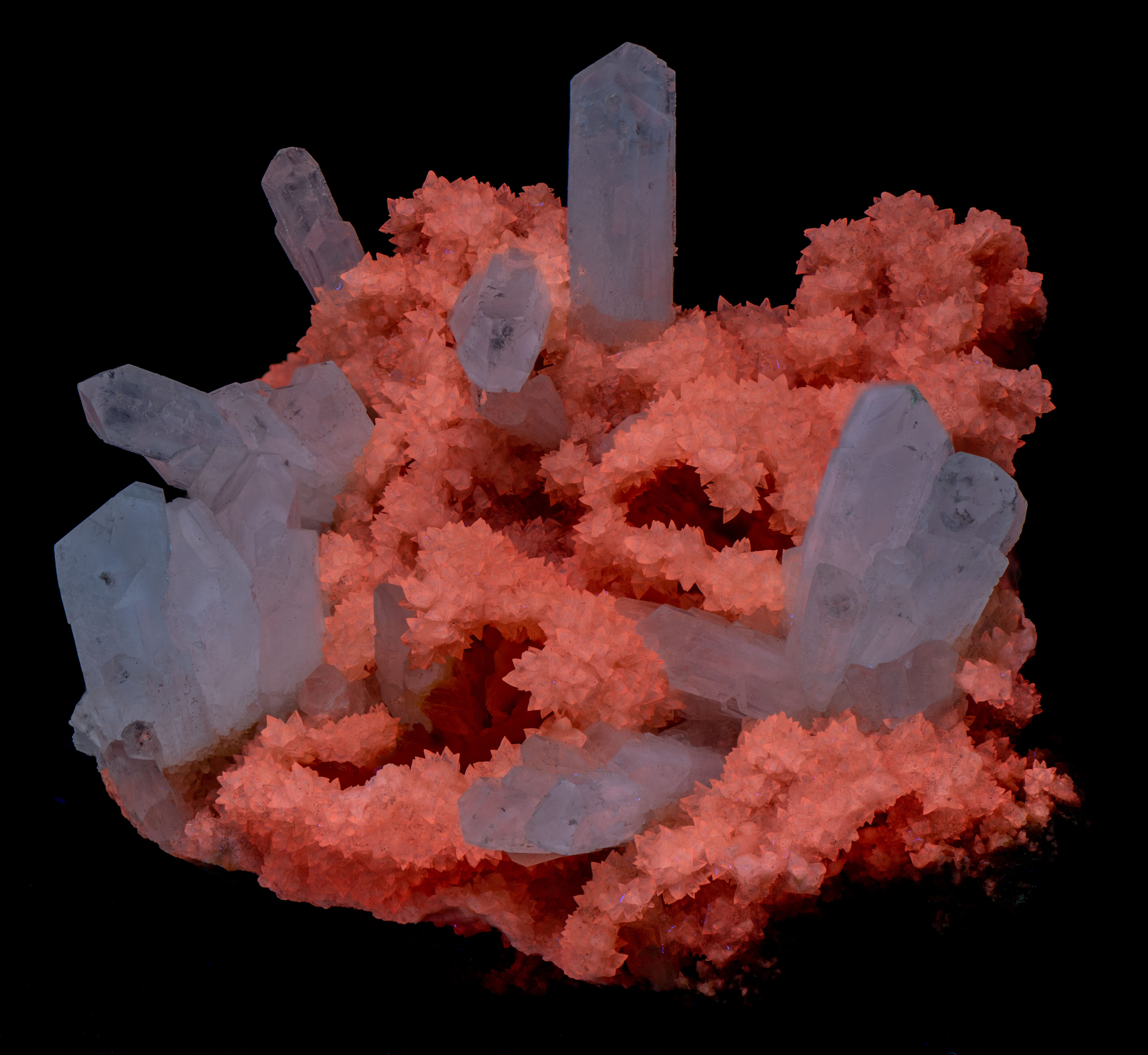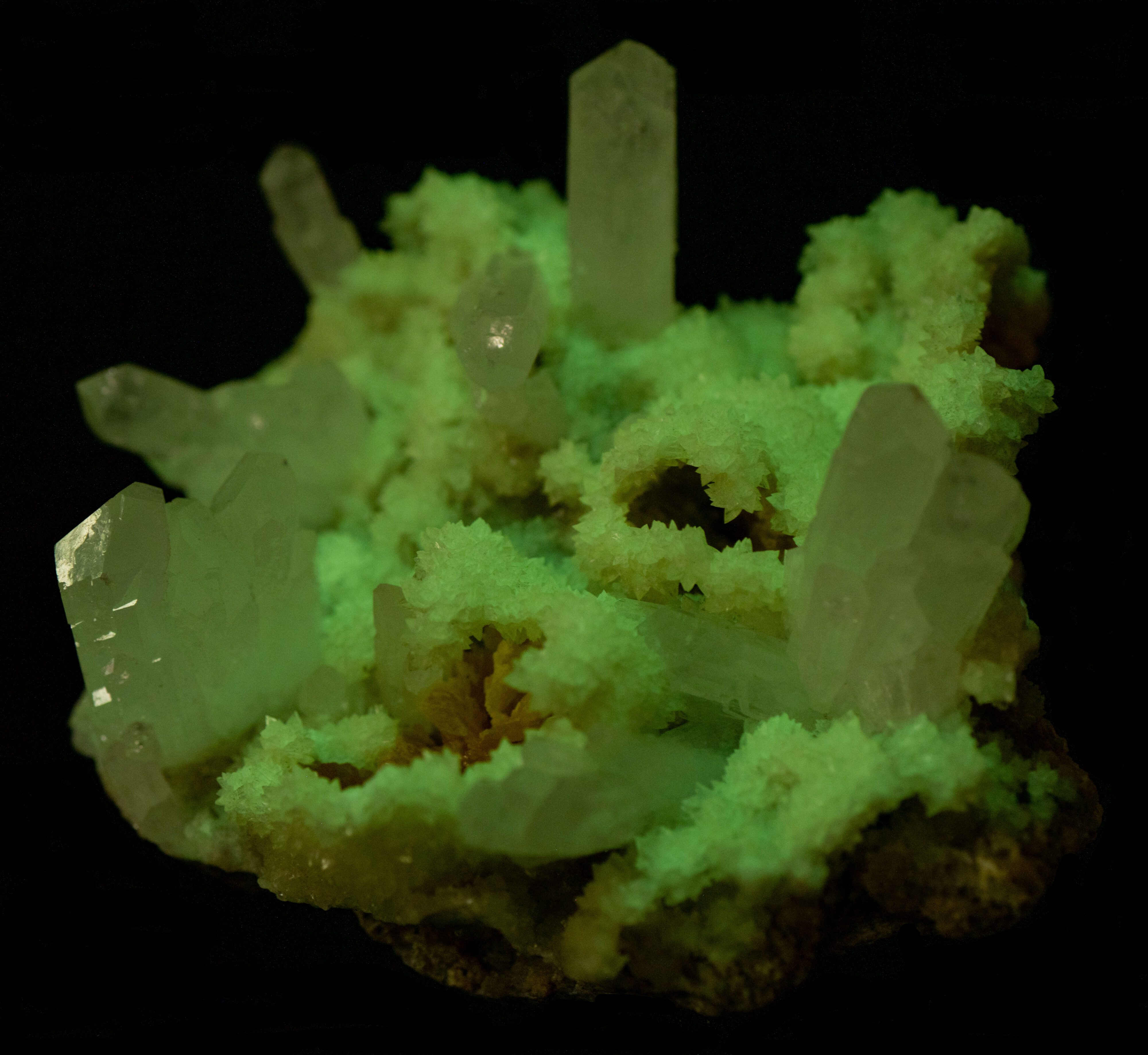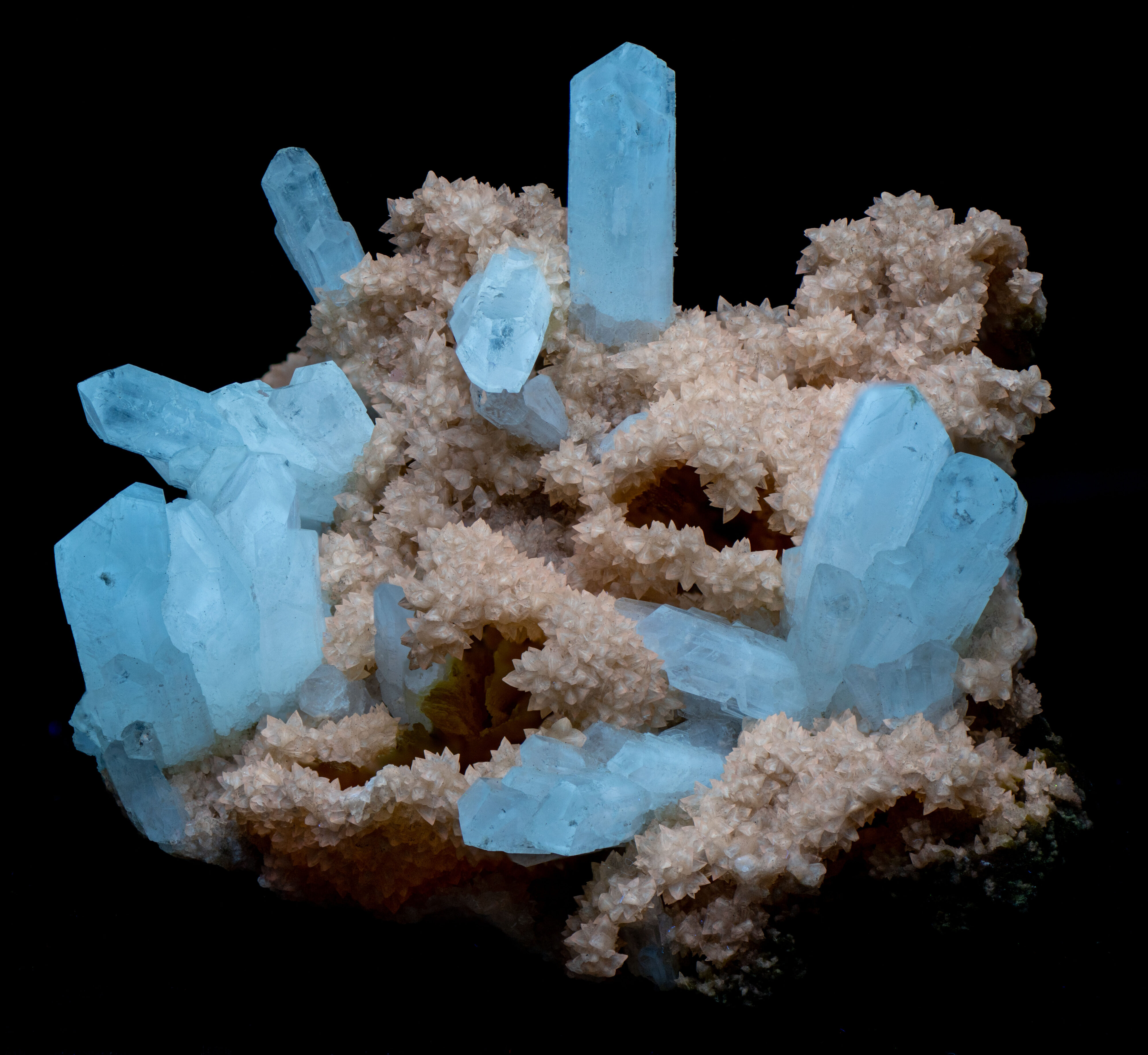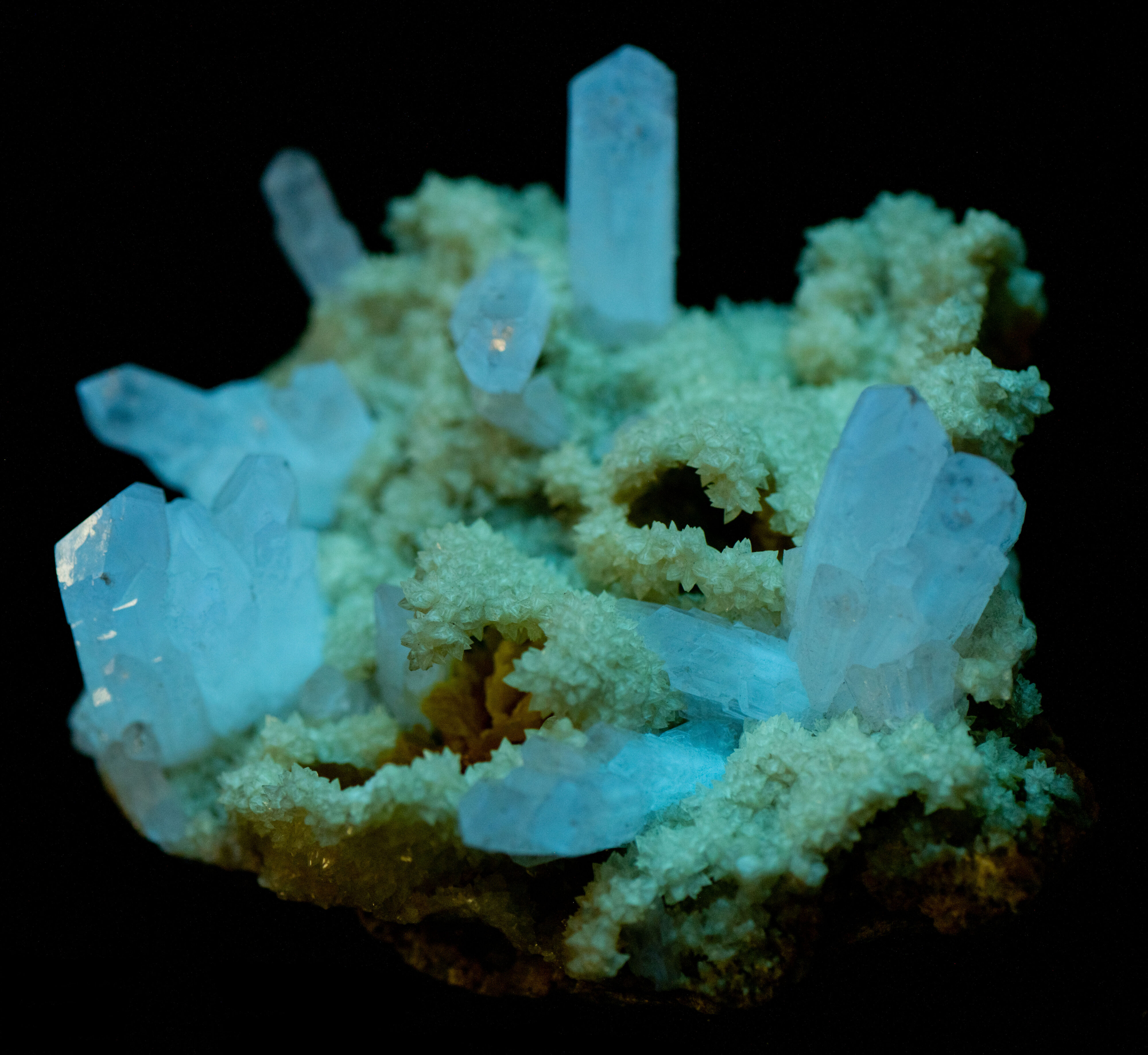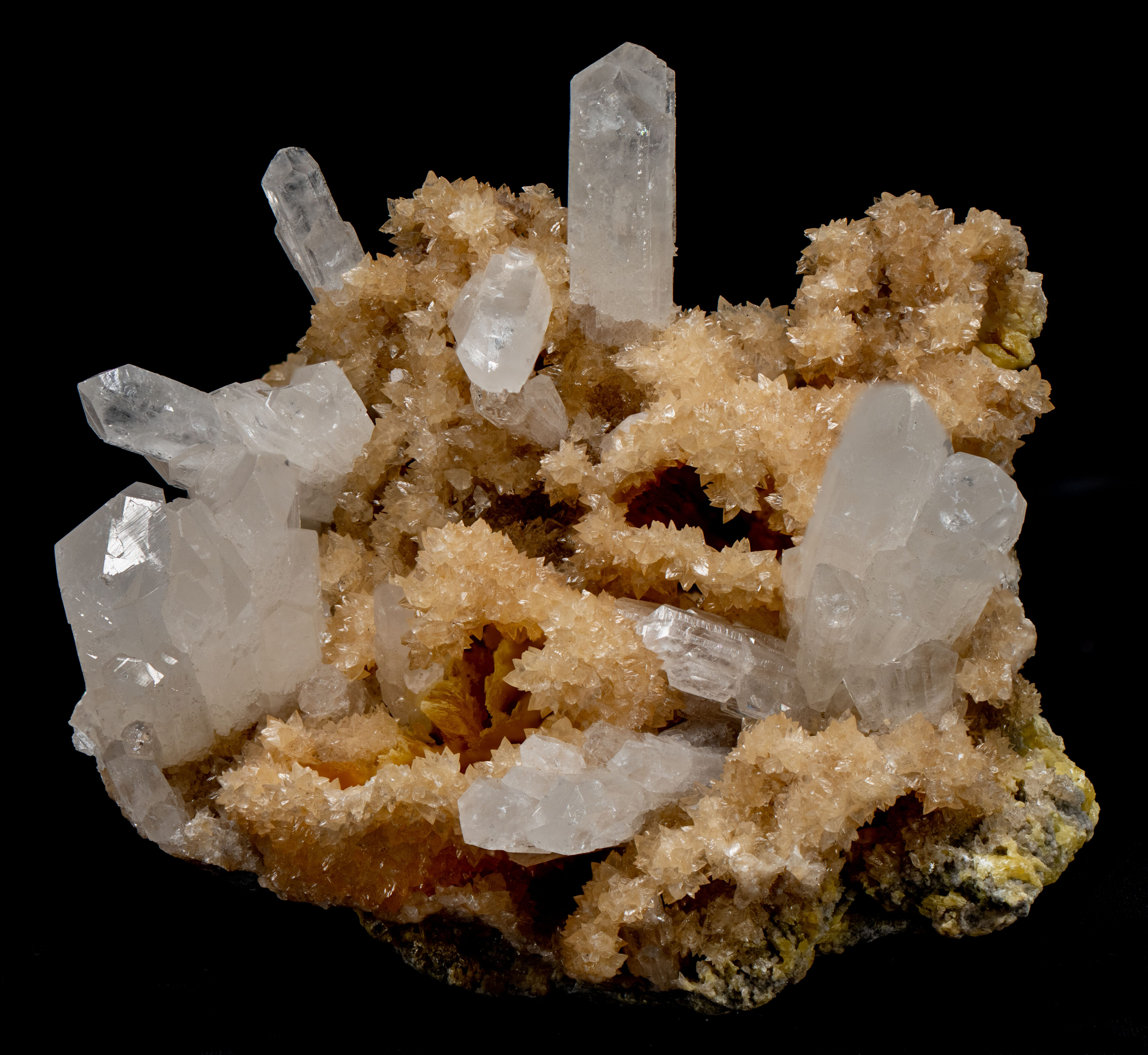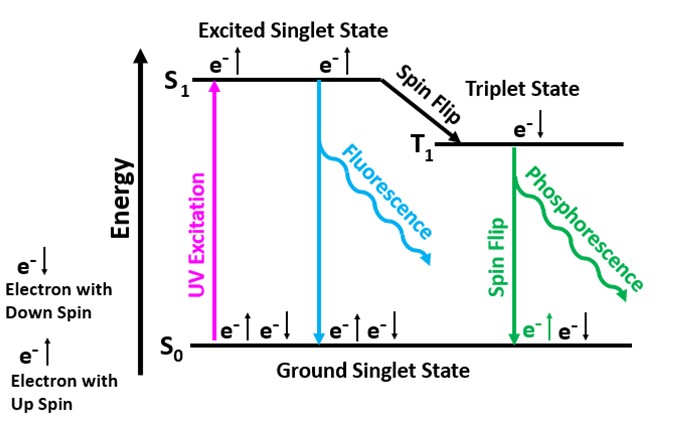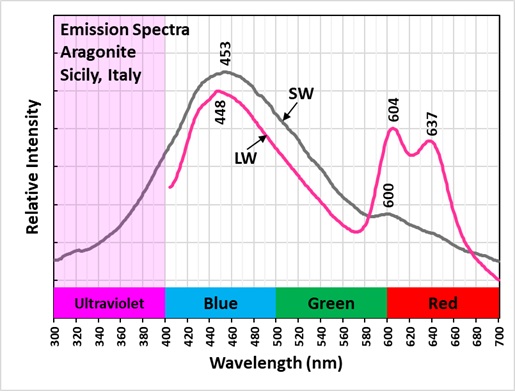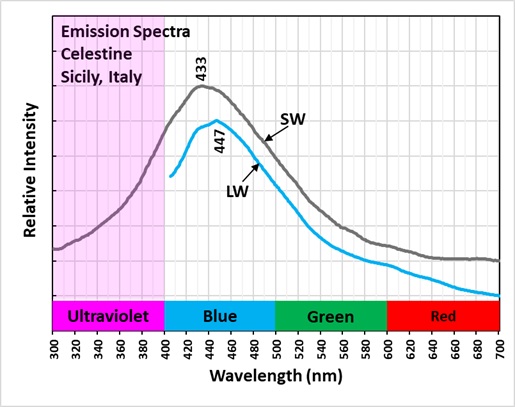Celestine and Aragonite from Agrigento, Sicily, Italy
Contributed by: Michael Crawford
Date: Sep 18th, 2025
Locality: Agrigento, Agrigento Province, Sicily, Italy (See on Mindat)
Size: 8 x 9 cm
Description:
This is a specimen of orthorhombic crystals of celestine on a matric of drusy aragonite crystals from Agrigento, Agrigento Province, Sicily, Italy. The celestine fluoresces bluish white under longwave and shortwave UV illumination. The aragonite fluoresces pink under longwave light, and it is pinkish white under shortwave light.
The emission peaks around 430 to 450 nm are caused by organic activators in aragonite and celestine. There are two additional peaks in the longwave emission spectrum of aragonite at 604 nm and 637 nm. The activation of these peaks is unknown at this time.
Both minerals have long lasting green afterglow from exposure to longwave UV light. The longwave emission spectra have a broad peak with a maximum at 447-448 nm. This emission peak and the green afterglow indicate activation by aromatic organic molecules. These molecules have a lot of conjugated double bonds whose electrons are easily moved from the ground singlet state to an excited singlet state at a higher energy level by exposure to UV light. According to quantum mechanics, the singlet state contains two electrons with opposite spins and when excited by UV light one electron moves to a high energy level of an excited singlet state. Excited singlet states are short-lived, so most electrons return to the original ground singlet state and the excess energy is emitted as a photon. The photon emission is the bluish white fluorescence we see with a peak around 450 nm.
Some electrons move from the excited singlet state to a slightly lower energy level known as the triplet state. The electron spin is flipped in the move to the triplet state, and it now has the same spin as the electron left in the ground singlet state. Quantum mechanics forbids electrons of the same spin in the ground singlet state, so the electron in the triplet state must flip its spin to return to the ground singlet state. The electron must wait until the ambient thermal crystal lattice vibrations cause it to flip again before it can fall back down to its original state and emit a photon. The triplet state is at a lower energy level compared to the excited singlet state. Therefore, the energy of the photon emitted when the electron moves back to the ground singlet state from the triplet state is less. According to Planck’s Law, lower photon energy corresponds to a longer wavelength (green) for the phosphorescence. Temperature affects the time for the spin to flip and for the electron to return from the triplet state to its original singlet state. Cooling the crystal extends the phosphorescent time.
This type of fluorescence and phosphorescence activated by aromatic organic compounds occurs in several minerals that form in near surface, low temperature environments. The list of minerals include calcite, aragonite, selenite, celestine, fluorite, witherite, and colemanite.
Summary of luminescence responses:
Aragonite (Mindat) (RRUFF)
- Fluorescence under Longwave (365nm LED) UV light: Pink
- Fluorescence under Shortwave (255nm LED) UV light: White
- Fluorescence under Longwave (365nm LED) UV light: White
- Fluorescence under Shortwave (255nm LED) UV light: White

